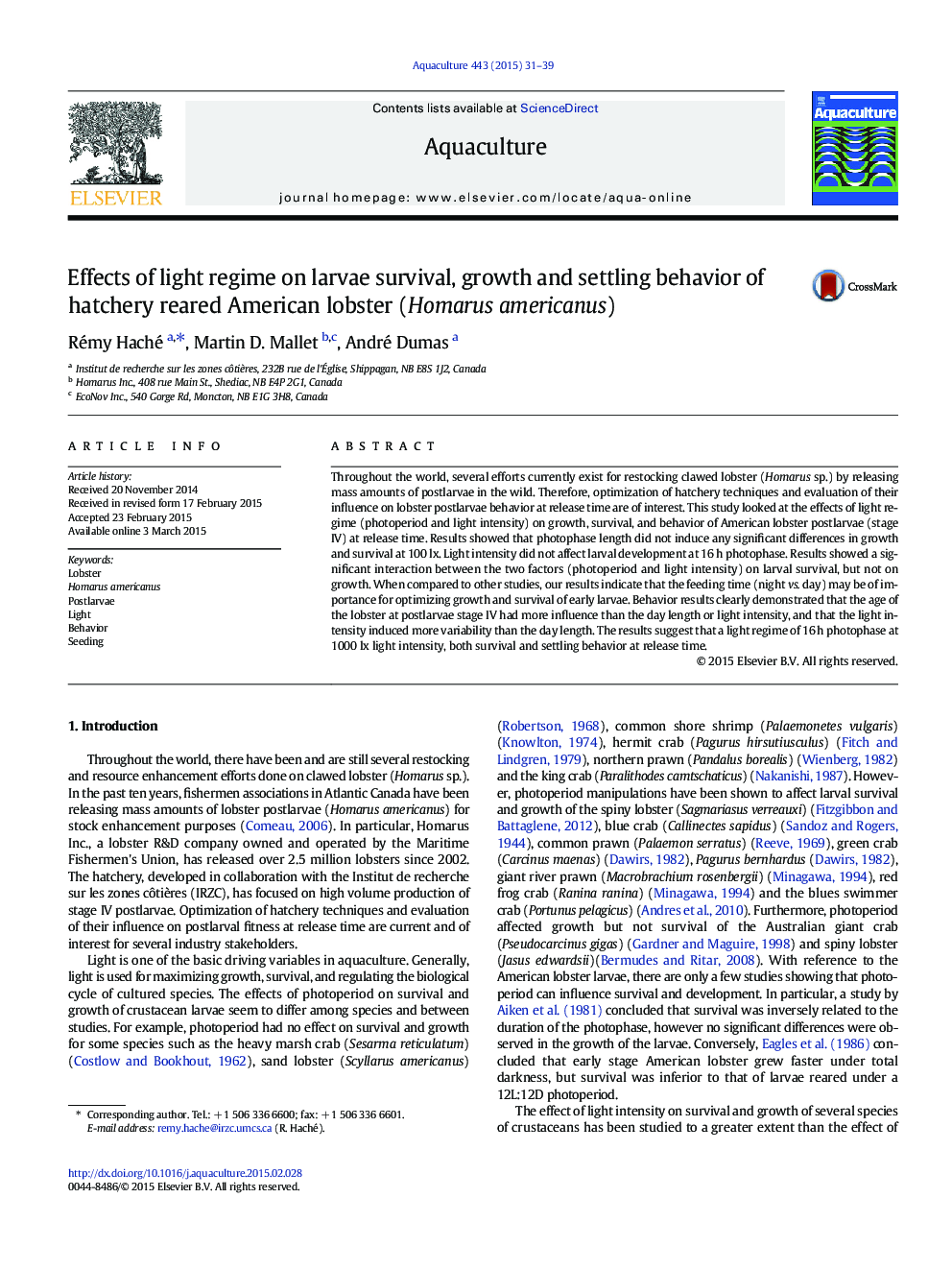| Article ID | Journal | Published Year | Pages | File Type |
|---|---|---|---|---|
| 2421579 | Aquaculture | 2015 | 9 Pages |
•Taken separately, day length did not induce significant differences in growth and survival at 100 lx.•Behavior results clearly demonstrated that the age of the lobster at postlarvae stage IV•Light regime of 16 h of light and 1000 lx induces both a better survival and a more favorable behavior at releasing.
Throughout the world, several efforts currently exist for restocking clawed lobster (Homarus sp.) by releasing mass amounts of postlarvae in the wild. Therefore, optimization of hatchery techniques and evaluation of their influence on lobster postlarvae behavior at release time are of interest. This study looked at the effects of light regime (photoperiod and light intensity) on growth, survival, and behavior of American lobster postlarvae (stage IV) at release time. Results showed that photophase length did not induce any significant differences in growth and survival at 100 lx. Light intensity did not affect larval development at 16 h photophase. Results showed a significant interaction between the two factors (photoperiod and light intensity) on larval survival, but not on growth. When compared to other studies, our results indicate that the feeding time (night vs. day) may be of importance for optimizing growth and survival of early larvae. Behavior results clearly demonstrated that the age of the lobster at postlarvae stage IV had more influence than the day length or light intensity, and that the light intensity induced more variability than the day length. The results suggest that a light regime of 16 h photophase at 1000 lx light intensity, both survival and settling behavior at release time.
